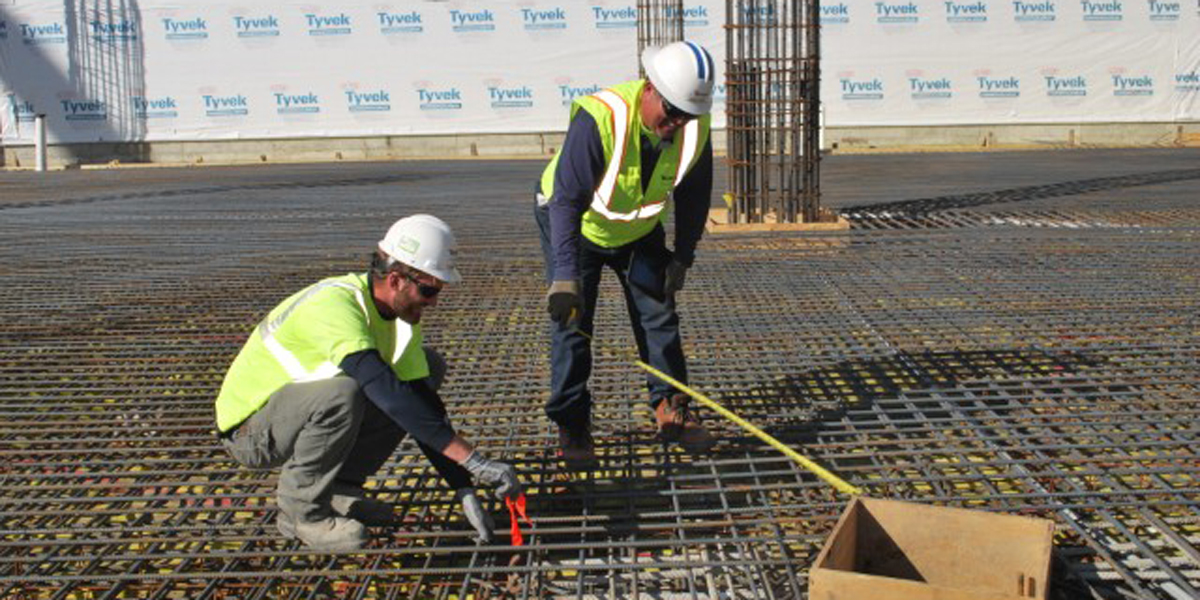Using proper materials puts public safety, costs first

Business Record Staff Jun 21, 2018 | 11:00 am
3 min read time
805 wordsBusiness Insights Blog, EngineeringBY SID JUWARKER, Client Development Manager, Terracon
Materials, such as aggregates, cement, steel, soil and fire-resistant products, are fundamental to any construction project, both during the construction and the structure’s commissioned life.
As I talked about in my previous blog, higher quality sometimes takes a back seat to cost-effective measures in construction, but in the case of materials, it’s crucial to use the best possible AND to ensure that they are used as intended and as specified by the design professional. As I’ve seen in the news every so often, low-quality, improperly installed materials and lack of inspections/monitoring of existing infrastructure can lead to structural failure and public safety issues, putting people’s lives in danger.
Terracon, as a wide-ranging engineering firm, must have knowledge of a vast array of materials being used for any type of project that it is employed to perform quality control for.
One of the ways to ensure that quality materials and workmanship are part of your project is through the employment of construction materials engineering and testing, or CMET. CMET involves testing structural materials in a variety of ways to ensure the materials are proper and safe for the project at hand. The testing takes place even before a project starts and goes throughout the life of construction. Essentially, CMET minimizes the risks during the life span of the completed project, especially if the project will be used a lot over time.
CMET is a wise investment, and in some cases code-required, particularly for high-rise structures, bridges, medical and educational facilities, and any other high-use/high-occupancy structures.
It provides benefit beyond safety as well. Using quality materials will limit replacements over the course of a structure’s life span — saving money down the road. Structural failures lead to hefty legal fees and repair costs.
I chatted with our office manager and expert in this field, Jeff Magner, about some of the basics of CMET.
“You see often in the paper that X number of bridges aren’t sufficient,” he said. “People like to focus on bridges because they can fail spectacularly. The quality control and quality assurance that goes into all public projects are important because they handle a lot of people on a daily basis. The building and materials needed to be closely watched and properly tested.”
How CMET works
The range of construction materials testing services available to the construction industry is extensive, from simple tests performed with hand tools to complex tests performed with electronic instrumentation monitored remotely.
Third-party labs, typically engineering firms, are employed to test materials at every stage of the construction. Terracon owns 130 construction materials laboratories across the United States that are continually accredited by industry-recognized agencies.
When choosing a lab, consideration should be given to using accrediting agencies, such as the National Voluntary Laboratory Accreditation Program (NVLAP) or the American Association of State Highway and Transportation Officials (AASHTO), to make an educated decision. These organizations provide accreditation based upon on-site audits, proficiency tests and review of staff and training programs used to evaluate personnel providing quality tests.
Firms like Terracon also offer on-site quality assurance and consulting before and during the project to ensure the materials selected are proper for a project and provide the most benefit in the short and long terms.
“We spend a lot of time training staff so that they are educated in the process of construction and the materials that are being used,” Magner said. “There are a lot of standards that come into play with materials testing. Those standards are followed to make sure quality materials are being used on projects.”
Proper materials benefit infrastructure long term
An example of proper construction materials saving money can be linked to the roads you drive on every day.
To keep pavements lasting longer and to keep them from degrading, a mixture of materials called cement modified soil (CMS) is oftentimes used in the subgrade. It helps saves money in construction and maintenance costs for municipalities, DOTs, airports, commercial developments and more.
An example of this is a recent airport project completed in the Midwest where utilization of CMS resulted in a savings of over 40 percent of the engineer’s estimated taxiway cost.
“It’s not just for safety, although that’s a huge part of it,” Magner said. “In the long run, if quality materials are used, it’ll reduce potential costs down the road for maintenance. Every structure requires maintenance, and if you don’t use quality materials upfront, you can actually end up paying more in the long run. Properly built structures actually incur less costs.”
My takeaway
Using quality materials provides two great benefits: safety and long-term cost savings. Proper testing of construction materials is essential in achieving these goals, and in some cases, staying within code requirements. I hope this blog has helped you see the crucial aspects behind CMT.
 |
Sid Juwarker View Bio |











